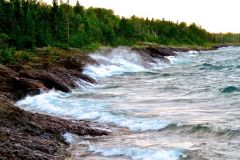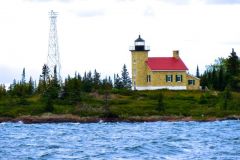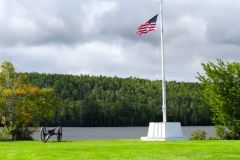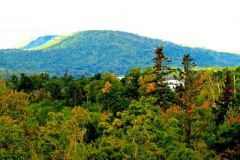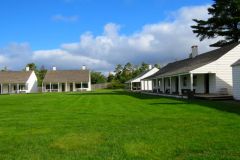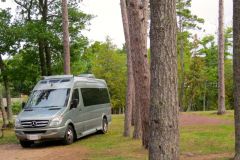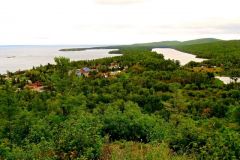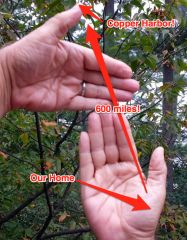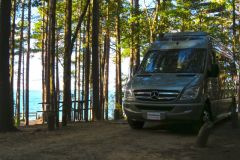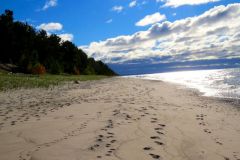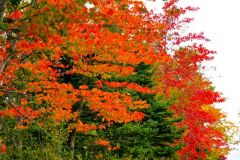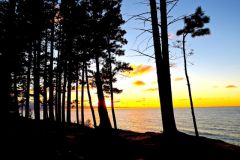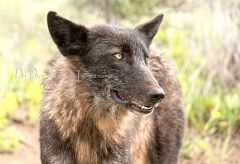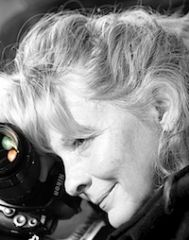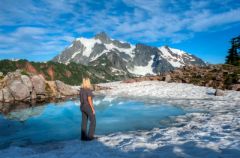-
Content Count
669 -
Joined
-
Last visited
-
Days Won
17
Content Type
Profiles
Forums
Blogs
Gallery
Everything posted by Roadtrekingmike
-
From the album: Copper Harbor, Mich. -- the End of the Road
There are many spots on the lonely Superior shoreline for photos like ths. -
From the album: Copper Harbor, Mich. -- the End of the Road
The lighthouse is accessible only by boat and is restored to its 1846 condition. -
From the album: Copper Harbor, Mich. -- the End of the Road
The Fort is on the shores of Lake Fannie Hooe, just across U.S. 41 from Lake Michigan, -
From the album: Copper Harbor, Mich. -- the End of the Road
Brockway Mountain -
From the album: Copper Harbor, Mich. -- the End of the Road
Most of the buildings at Historic Fort Wilkins State Park have been restored to their mid-1800s condition. -
From the album: Copper Harbor, Mich. -- the End of the Road
The campsites on the eastern loop of Historic Fort Wilkins State park are flat, grassy and roomy. -
From the album: Copper Harbor, Mich. -- the End of the Road
Copper Harbor is at the end of U.S. 41 at the tip of the Upper Peninsula’s Keewenaw Peninsula. -
From the album: Copper Harbor, Mich. -- the End of the Road
Mike's hand map -
Everyone knows we Michganders love to represent our state by showing our hand. Here, try it. Take your left hand and extend it, palm facing out. That’s the Lower Peninsula, the familiar Michigan mitt. Okay, now turn your extended left hand to the left, and bring your handdown to the right so the fingers are pointing horizontally to the right. That’s the Upper Peninsula. Now bring up your right hand, palm facing you, thumb to the right. Put the left hand at the top of the right and…voila… a map of Michigan. Now look at the tip of your thumb on the hand representing the Upper Peninsula. That is Copper Harbor, the end of the road, some 600 miles northwest of my southeastern Michigan home, at the tip of the Keweenaw Peninsula. You can’t go any further north without falling in Lake Superior. In fact, Lake Superior borders the little town of Copper Harbor on three sides. A mountain, Brockway Mountain, hems it in from the South. It is so remote that you can’t even get cell phone coverage in town. There’s one way in, US 41, which dead ends about two miles out of town. It is one of the best spots we’ve found to take our RV anywhere in North America. Copper Harbor, with a year-round population of 90, prides itself on being far away, But what it lacks in big city amenities, it more than makes up for in outdoors fun. Start out at the Historic Fort Wilkins State Park, tucked along the shoreline of Lake Fannie Hooe, a long inland lake loaded with trout that is just across US 41 from the pounding surf of Lake Superior. There are two loops to the park, the west unit with paved pads for big rigs, and the east unit with flat but grassy spots a half mile away. Separating the two campgrounds is Fort Wilkins, a wonderfully restored 1844 military outpost. We spent a night in each loop. Even though the west campground was more modern with the cement pads, we preferred the east, which when we visited in mid-September was less crowded. To compensate for the lack of cell phone coverage the state park, and most places in town, offered free and surprisingly robust WiFi connectivity. The Fort is well worth half a day’s visit. It was opened in 1844 in the midst of the copper mining boom which had made the whole Keweenaw Peninsula as wild and wooly a place as Alaska’s Skagway during the Gold Rush. Thousands of miners from all over the world were pouring into the region and the local Ojibway and Chippewa Indians were understandably resentful of the Treaty of La Pointe that had taken the land from them and ceded the area to the United States two years before. The Fort was established to keep what was thought to be a delicate peace. But it was all for naught. The fort proved to be unnecessary. The native Americans largely accepted the influx, and the miners were too cold in the unforgiving climate to be anything but law-abiding. In all, the Army built 27 structures,including a guardhouse, powder magazine, 7 officer’s quarters, two barracks, two mess halls, hospital, storehouse, sutler’s store, quartermaster’s store, bakery, blacksmith’s shop, carpenter’s shop, icehouse, four quarters for married enlisted men, stables, and a slaughter house, to house the operations of two full-strength infantry companies. Several of these original structures still survive. Most of the others have been rebuilt following archaeological excavations. The Fort was garrisoned for just two years, with nearly 120 soldiers stationed there. In 1846 , when the Mexican War broke out, the fort was abandoned, leaving behind a single caretaker. Some troops came back during the Civil War, and it was again reoccupied , but for just three years in 1867-1870. The archeological excavations and restoration of the buildings by the State of Michigan is spectacular and you can walk in and out of the buildings, seeing artifacts from the time and reading letters from the men who spent a miserable existence in a place so remote to be militarily irrelevant. We absolutely delighted in strolling around the fort, just a short walk from our campsite. There is, across from the Fort a quarter mile out into the Big Lake, a lighthouse, first constructed in 1846. It, too has been restored and tours are available all day. You need to board a boat in Copper Harbor for a short ride to the lighthouse. Then we headed into Copper Harbor. The town has become a mountain biking mecca, with world class trails abounding in the hilly forests that surround the town. We found mountain bikers gathered from across the country. Many are very hardcore and the trails are technical. But there are also easy rides and a great place to rent bikes right downtown. At the end of the day, the bikers all congregate at the Brickside Brewery, a very friendly microbrewry that hand crafts artisan brews. Copper Harbor is also a center for kite surfing. We watched a half dozen wetsuit clad kite surfers scoot across the frigid waters and always roiling waves of the lake. Also in town and well worth a hike is the Estivant Pines, a 500 acre stand of virgin white pines. Michigan, in the mid to late 1800′s was the land of white pines and the entire state was practically clear cut by thousands of rough and tumble lumberjacks. The white pine, which grows 150 feet tall, were used for sailing masts and its lumber built many a frontier town as the nation expanded west. Today, the state has been reforested but the magnificent stands of white pine are almost all gone, expect for places like the Estivant plantation up in Copper Harbor and a stretch called the Hartwick Pines near the Lower Peninsula town of Grayling. About the time the white pine forests were being played out, copper became the next big thing for Michigan, headquartered on the Keweenaw . There are tours of two copper mines within a short drive of Copper Harbor. The Delaware Mine just south of Copper Harbor, and the Quincy Mine near the town of Hancock, offer guided tours deep underground. Copper turned this part of the state so rich at the Keweenaw town of Calumet missed becoming the capital of Michigan by two votes. The copper boom was fueled by huge demands for copper wiring, as the nation began lighting city streets and homes with electricity. The copper, too, too played and after a devastating mining strike in 1913, industry slowly vanished from the Keweenaw . Today, it’s the end of the road. And beautiful. The air is clean, so is the water. Fish and wildlife abound and those who live here pretty much choose to live here. I got to be a judge in the town’s annual Chili cookoff and in the process met lots of locals, young and old. They are proud of their heritage, deeply respectful of the land and lake, and very welcoming to visitors, especially RVers. If history is your thing and you like to learn about it surrounded by beauty, Copper Harbor is deserving of a visit. Give yourself a week up here. What to do? Fishing, hunting, biking, exploring during the summer, snowmobiling, sled dog races and ice fishing in the winter. There is a gourmet coffee shop, several excellent restaurants and, of course, the Brickside Brewery. And yes, US41 is plowed and maintained all year round. The folks of Copper Harbor know how to handle the annual snowfall of over 300 inches. Alas, the state park shuts down in October, though there is also an excellent private campground in town that may be able to handle late season RVers. It may be the end of the road, but there’s a lot to see and do. We’ll be back ....
-
I love fall. The blue skies are more blue, the air smells clean and crisp and has no more of the sweltering heaviness of summer. But it also makes me a little sad because, living in a northern climate like Ido, the approaching cold weather means it’s time to curtail my travel. It means long stretches of RVing inactivity. Of watching snow accumulate on top of the Roadtrek. Of having to winterize it. Of sneaking out there, turning on the heat, and sitting in it, remembering the places we’ve visited, dreaming about the ones we will visit. Sometimes, I’ve been known to take a nap in my Roadtrek. In the driveway. It’s not that we don’t use it in the winter. We do. Just not as often as we do in warmer weather, when weekend and short trips are easy and the roads are not snow-covered and slippery. A few times each winter, we break loose and head south. Last year, I winterized the RV three times. We made winter trips to Florida, Alabama and Georgia and each time, when we returned from those warmer states, we had to pump antifreeze back through the system again before getting back to Michigan. Once, I worried the pipes froze when the temperatures took an unexpected sudden drop in Louisville, KY. They didn’t. But it was close. I’m planning on monthly trips this winter, too. We plan to again visit Georgia and Florida, maybe the Texas Hill Country and the desert southwest. And we will do some winter camping again, like we did last year when the temperature at Tahquamenon Falls dipped to minus eight degrees and there was 28 inches of snow on the ground! But those trips will not be as extensive or frequent as they’ve been since April, when we really began our travels in ernest. Its enough to make me want to move and find a new place with a heated garage. That would be nice, huh? I know this: I don’t want to stop Roadtreking for such a silly thing as winter.
-
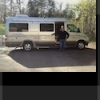
Roadtreking and the Interesting People You Meet
Roadtrekingmike posted a blog entry in Roadtreking Blog
The RV life is so much fun because you don’t know what adventure is around the next bend. But the people you meet along the way are equally enjoyable. I don’t think Jennifer and I have yet to return from a Roadtreking trip without making some new friends. On our most recent trip to Michigan’s Upper Peninsula, we met interesting people at each stop. Up at the Historic Fort Wilkins State Park in Copper Harbor Michigan, we found ourselves sharing a campground with husband and wife Roadtrekers Dave DeKeyser and Rebecca Cleveland, two new Roadtrek RT Ranger owners. The couple travel with their two dogs Cisco and Archie and carry two bicycles on the back. That’s to be expected because the two own The Bike Hub, a bicycle retail and service shop in the Northwestern Wisconsin town of DePere. From late April through August, they can hardly find time to ride themselves because summer is prime time in the bike business. But from now through late spring, they getaway every chance they can, the past week or so riding the awesome mountain bike trails near Copper Harbor, and after the holidays, off to Arizona and Colorado and the cycling scenes there. The couple loves their RT Ranger, which was upgraded out with a heavier chassis, a propane heater and a generator. The two dogs sleep up front and the couple has no problem with room. “This s perfect for us and our lifestyle,” said Dave, between walks and hikes with the dogs and mountain bike rides with his wife. Rebecca, a former professional racer. At the same campground, we reconnected with Dennis and Joyce Crabtree, who have been on an extended multi-state tour in their Roadtrek RS Adventurous from their Commerce City, CO home. We had earlier met the couple at the Roadtrek rally in Branson, Mo., this spring. The Crabtrees are veteran Roadtrekers. Joyce needs help breathing from a special machine but doesn’t let that keep her from seeing the country. The electrical system on their Adventurous delivers solid, reliable power all day long. Dennis is a kayaker and when we pulled alongside, he had just put his kayak on the roof of the Honda CRV he tows. He had been out earlier in Lake Fannie Hooe and had caught a walleye. “Towing our car lets us easily stow the kayak,” he says. “And we can hook up camp and Joyce’s satellite TV dish and not have to move. The Roadtreks can pull up to 5,000 pounds.” From Copper Harbor, we made our way down to St. Ignace, just across the Big Mac Bridge that connects Michigan’s two peninsulas. At the Straits State Park there, we came upon a 2006 Roadtrek 190 with a vanity front license plate that identified it as “The Condo.” I had to get a picture so knocked on the door and thereupon met Nick and Jan Nopper, from Grand Rapids, MI. They bought the Roadtrek this past summer, downsizing from a 40 foot Monaco Class A motorhome. “This is the fifth motorhome we have owned,” said Nick. “The four other ones were Class A’s. We had that same license plate on all of them.” The choice to downsize was an easy one for the couple. “This is just much easier to drive,” he said, pointing at his new Roadtrek. “We also just bought a home in Florida and we can use this to go back and forth and even take some side trips with.” The couple was on their way over to Mackinac Island for a three day getaway at the Grand Hotel with the Roadtrek providing transportation and a place to stay on the road. “We just love seeing the country,” said Nick. “Gives us something to do besides just sit around in our old age.” If there is any common denominator between these three very diverse couples it has to be the spirit of adventure. Such is the Roadtreking life. Our RVs – be they Roadtreks or small motorhomes from other Class B manufacturers – offer mobility and ease of operation, with room to take everything we need to be comfortable. There are new places to visit and new friends to make. It’s a big country out there. And our small motorhomes can get us there. Like the T-shirts on the Roadtrekingstore.com say, we may have a small house. But we have a big yard. See you out there ... Dave and Rebecca DeKeyser from Wisconsin with Cisco and Archie and their new Roadtrek RT Ranger Dennis Crabtree from Colorado outside his RS Adventurous. He tows the Honda CR-V with the kayak on top. The Grand Rapids, Mich., couple who just bought this Roadtrek 190 downsized from a 40-foot Class A motorhome. They call their Roadtrek “The Condo.” -

Michigan's UP in the Fall and Twelvemile Beach
Roadtrekingmike added images to a gallery album in Members Gallery
-
From the album: Michigan's UP in the Fall and Twelvemile Beach
Our campsite at Twelvemile Beach Campground -
From the album: Michigan's UP in the Fall and Twelvemile Beach
You can walk and hike for miles along Lake Superior. This is Twelvemile Beach, right in front of our campsite. -
From the album: Michigan's UP in the Fall and Twelvemile Beach
Color is everywhere; the trees are changing fast. -
From the album: Michigan's UP in the Fall and Twelvemile Beach
Sunset from our campsite at Twelvemile Beach -

Fall foliage in Michigan's Upper Peninsula
Roadtrekingmike posted a gallery image in Members Gallery
From the album: Michigan's UP in the Fall and Twelvemile Beach
Viewing Michigan's fall colors in a motorhome is hard to beat. -

Michigan’s UP in the Fall and Twelvemile Beach
Roadtrekingmike posted a blog entry in Roadtreking Blog
This is the time to “come up to da UP,” as the Yoopers like to say. The flies and mosquitoes are gone, so are the crowds and the whole peninsula is bursting with bright yellows and reds as the annual fall foliage change explodes the hardwoods into jaw-dropping displays. And the sunsets are to die for. This year, the color change is later than normal. We came up last Thursday and it was just starting. As we head back downstate today five days later, it’s clear that its moving fast now. This coming weekend and next should be peak times. Jennifer and I love the UP. This is our third extended trip up here since February. Yes, that’s right. I said February. we drove the Roadtrek up and camped out at Tahquamenon Falls with 28 inches of snow on the ground and minus 8 degree Fahrenheit temperatures. No problem. You can see what that was like here. And we came back up a couple of months ago during peak bug and biting fly time. It was still beautiful – as this shows – but much more uncomfortable. This trip is our favorite. And we used it to visit our favorite campground – the beautiful Twelvemile Beach National Parks Service campground on Lake Superior, part of the Pictured Rocks National Seashore. Located 15 miles west of Grand Marais off Alger County Road H-58, this no-hookup 36-site campground is located on a high sandy plateau above Twelvemile Beach, one of the most remote and beautiful stretches of Lake Superior you will find anywhere in the UP. Half the sites are generator free and that’s where we headed, selecting site #25. With our all electric Roadtrek eTrek and its solar power, we needed no such noisy power source. It got cold. The first frost warning of the year for the UP was issued last night. When I got up at 3 AM to use the bathroom, the outside temp read 35 degrees. Our Webosto heater was adjusted to give us a perfect 62 degree inside temp. This is a very hard park to get into – during the summer. This late into September, we had lots of lakefront spots to choose from. This is bear country. So if you come here, keep a neat campsite and use the bearproof food storage units. There are pit toilets here, fire rings and picnic tables. The campground connects to several hiking trails. Over the next few weeks, well have reviews and stories about various places to visit up here that will help you plan a trip to the UP next year. But if you want to squeeze in a trip yet this season, better hurry. Most campgrounds shut down for the winter in October. Some, like Twelvemile Beach, shut down Oct. 1. -

Our RV Life: Discovering the Beauty Beneath the Blur
Roadtrekingmike posted a blog entry in Roadtreking Blog
All my life as a journalist- for more than three decades – I’ve been on deadline. The presses would roll, the red light on the studio camera would blink on and, that was it. I had to be ready. Done. No more time. So the clock ruled my days. I was single-mindedly focused on finishing, getting to press time or air time. Then, I could breathe a little… and get ready for the next day. It was a wild, crazy, fun, frustrating and high-adrenaline occupation and I wouldn’t have traded it for the world. But last year, as I neared retirement age, I couldn’t help but get excited at the prospect of life NOT on deadline. That’s how I have been living the past 18 months. I have to admit, old habits are hard to put aside. “Why are we in such a hurry?” my wife Jennifer asked on our first multistate trip in our new Roadtrek back in the spring of 2012. I was 600 miles in on the first day and getting crabby. I wanted to make 800. “Because….,” I started to reply. Then I blanked. I couldn’t come up with a reason. I didn’t have to do 800 miles. In fact, there was no reason to be on the road as long as I had been that day. There was no deadline. That was the first lesson I learned on the first day of the first trip. It’s one I have to keep re-learning. There is no hurry. The journey is just as important as the destination. Getting there is, indeed, half the fun. The RV life is about being mobile, on the open road in our Class B motorhome. And it has taught me how to decompress. So many times in my journalism career, I’ve flown over the country, chasing some story, heading somewhere, fast, on deadline. I’d look down below from 35,000 feet and see a green and brown blur. Now, behind the wheel and on the ground in our Roadtrek, I’m discovering the beauty beneath the blur. It is a magnificent land and being on it, instead of above it, is both soothing and stimulating. I never thought I’d end up in an RV. But in so many ways, it’s been the perfect choice for Jennifer and me. Not only are we able to connect with each other, we’re meeting other people and learning things I never did standing in front of a camera using the land as a backdrop for my standup, or pushing a pencil in a reporter’s notebook. When you stop living on deadline, your eyes open wider. Life becomes an adventure of serendipity. Like the bit of history we picked up on a summer trip north to Michigan’s Upper Peninsula and the southern shore of lake Superior. Standing on a wilderness bluff next to a towering sand dune called the Log Slide, we learned that in the 1880’s lumberjacks slid 100-foot white pine logs down the dunes to the water, where they were gathered into huge booms and floated seven miles east to the town of Grand Marais. That sent us to that town and a delightful but seldom-visited little museum tucked away in a building once used as the post office. We spent an afternoon looking at old photographs and learning how Michigan’s lumber era was as lucrative as the California Gold Rush of the same era. In Gadsen, Alabama, we found a campground located on Black Creek and right next to the awesome 90-foot Noccalula Falls. There, instead of rushing back to the road the next morning, we lingered again over local history when we discovered the first statue of a person jumping off a cliff. The statue is of the Cherokee princess Noccalula who, according to local legend, plunged to her death after being ordered by her father to marry a man she didn’t love. It is made entirely of pennies collected from local school children in the mid-1960s. And on a trip back to our Michigan home from Florida, We decided to pull off the interstate and travel the two-laned US 127, which roughly parallels I-75 north through Tennessee and Kentucky, anywhere from 10 to 50 miles to the west. We leisurely made our way through scores of small, picturesque mountain communities and ended up at the Big Bone Lick State Park in northern Kentucky, about 35 miles south of Cincinnati. There we dug into America’s prehistoric past, learning about the bones of mammoths discovered there submerged in muck. President Thomas Jefferson has fossils found there in his personal collection. Those are just three examples about things I’d never have seen if I were still living on deadline. But because we were in our RV, staying right there, far from the look-alike chain hotels that cluster around the freeway interchanges, we were able to experience fascinating places that wouldn’t even have caused a blip on our GPS. Then there are the campfires and the people we meet sitting around them, the help and suggestions they give us about living in a motorhome. There are the bicycle rides on trails and roads we’d never ride if we weren’t able to haul our bikes on the back of our Roadtrek. And the special walks we take with our Norwegian Elkhound, Tai, who travels with us but would have to be left at home if we were hoteling it. We’ve driven 42,000 miles in our Class B RV since March of 2012 and living out this motorhome adventure. I may not be living on deadline anymore. But I’m still a journalist at heart, this time telling the stories I want to tell about people and places I’d never experience if I wasn’t out there in my RV. I look forward to meeting you down the road. Noccalula Falls near Gadsden, Ala. The statue commemorates a lovesick Indian maiden’s legendary plunge over the falls. The statue was made from pennies collected by schoolchildren. Jennifer and our dog, Tai, walk in a UP Michigan sunset along Lake Superior. -

Meet Deby Dixon: Living the Dream as Yellowstone’s Storytell
Roadtrekingmike added images to a gallery album in Members Gallery
-
From the album: Meet Deby Dixon: Living the Dream as Yellowstone’s Storytell
Deby’s new Yellowstone Daily at www.facebook.com/TheYellowstoneDaily -
From the album: Meet Deby Dixon: Living the Dream as Yellowstone’s Storytell
Deby Dixon wolf photo -
From the album: Meet Deby Dixon: Living the Dream as Yellowstone’s Storytell
Deby’s Facebook Page at http://www.facebook.com/debydixonphotography -
From the album: Meet Deby Dixon: Living the Dream as Yellowstone’s Storytell
Wolf photo by Deby Dixon -
From the album: Meet Deby Dixon: Living the Dream as Yellowstone’s Storytell
Deby Dixon Photograpy


